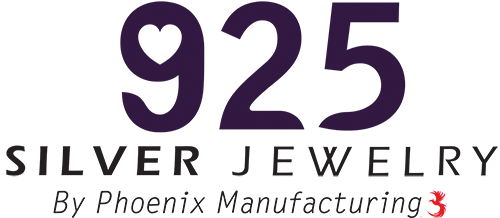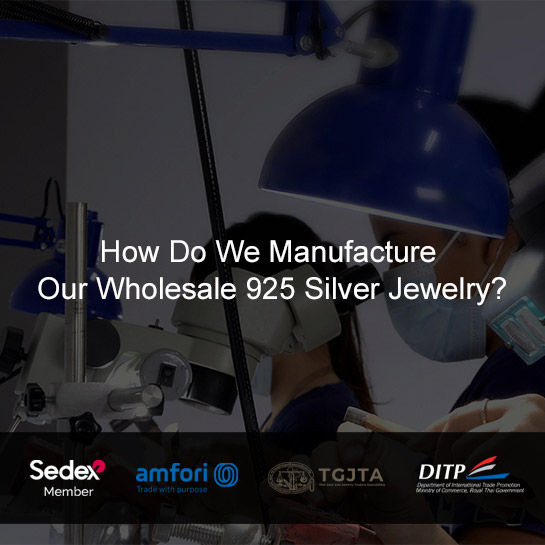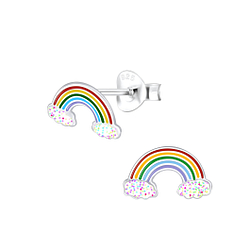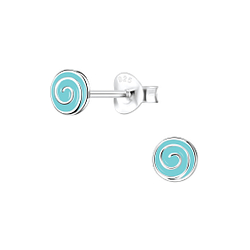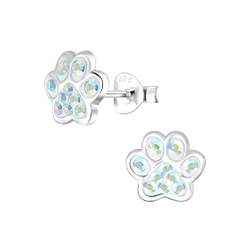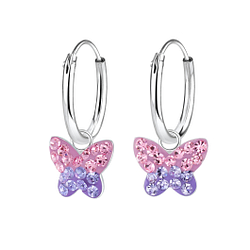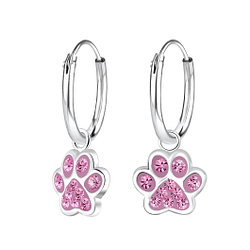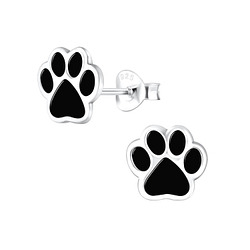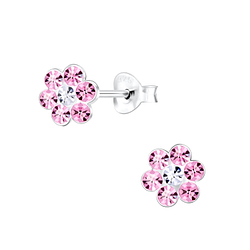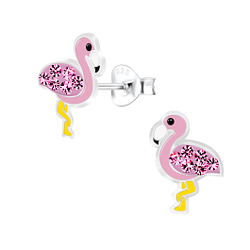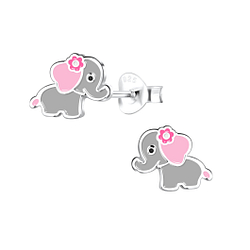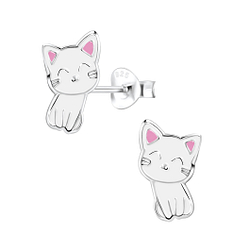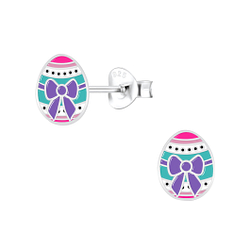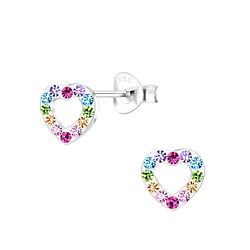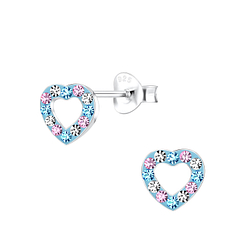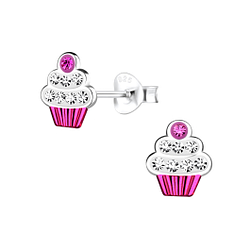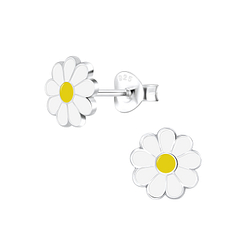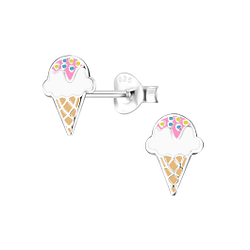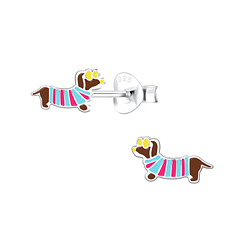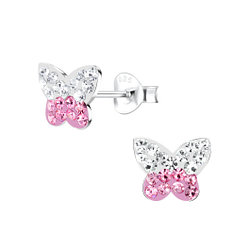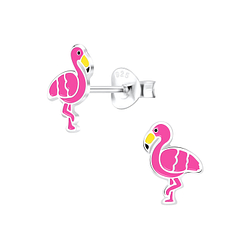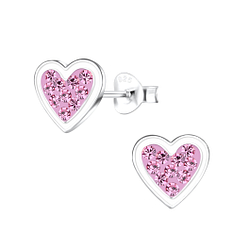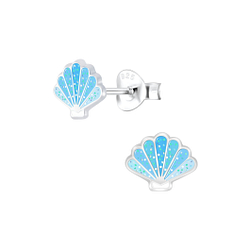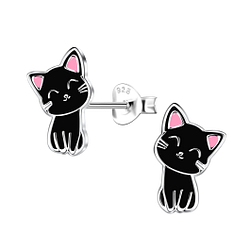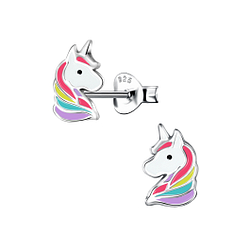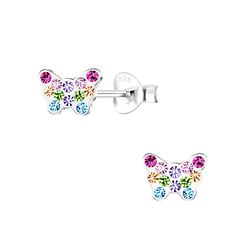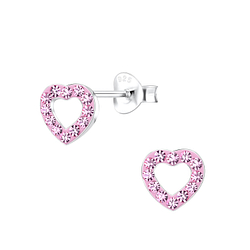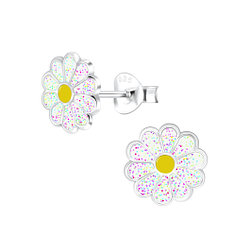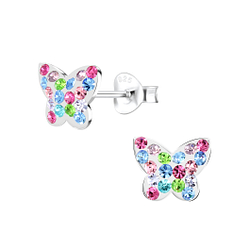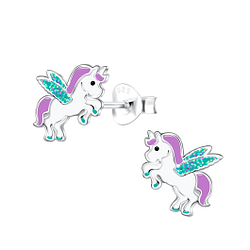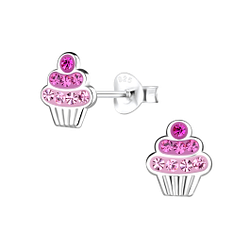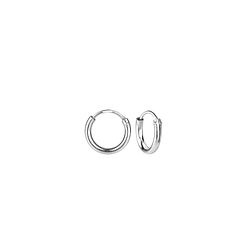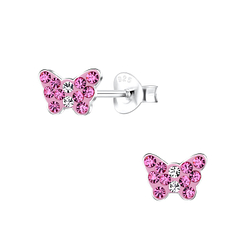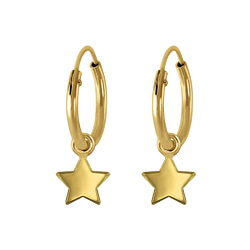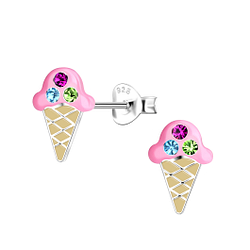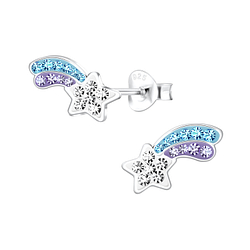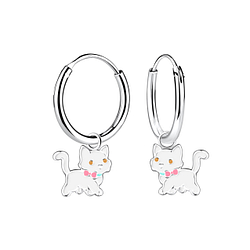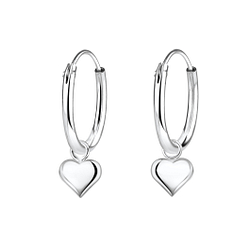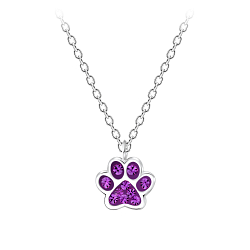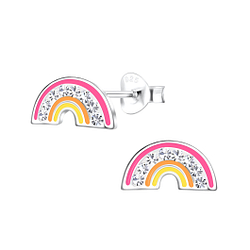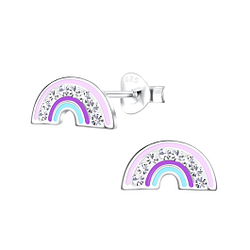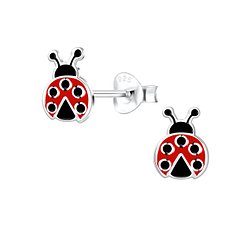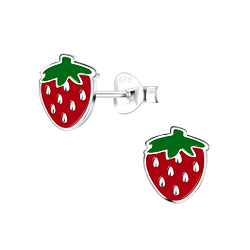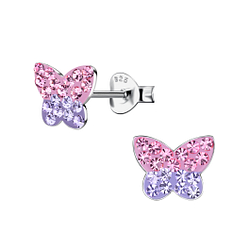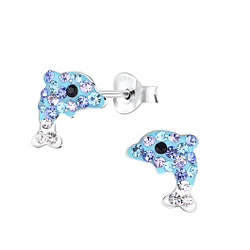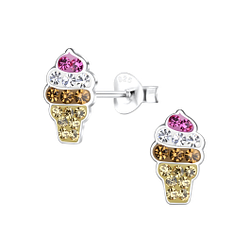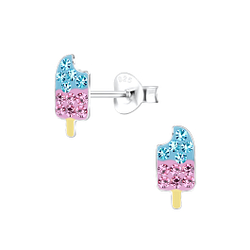The Process Of Crafting Our Wholesale 925 Silver Jewelry: Behind the Scenes
Among several manufacturing processes that contribute to different parts of a single piece of jewelry, we would like to walk you through a process that is crucial to every piece we manufacture.
Before we delve into the process, we want to address a common question we receive: why do we stamp 925 on our jewelry and claim to be a white-label manufacturer? The answer is simple – the 925 stamp indicates that our jewelry is made of 92.5% silver, and not because it’s our company logo.
As a manufacturer, we specialize in producing 925 sterling silver jewelry at a large scale while ensuring consistent quality. We utilize both the stamping and casting processes, which make up 99% of our catalog and include over 15,000 designs. As a result, we can produce an average of 800,000 sterling silver pieces a month consistently. However, this blog discusses our restocking process with a focus on our casting jewelry.
The Stages Of Restocking Our Jewelry
From ethically sourced raw materials to packaging, here are 19 stages that give you a brief overview of our manufacturing process:
Stage 1: Order Placement
To ensure that all our jewelry designs remain in stock for a long period, our wholesale 925 jewelry website is designed to send us a list of products that are about to go out of stock. Our team then analyzes this data manually, taking into consideration the monthly and annual sales reports, customer requests, popular designs, upcoming seasons, and new collections, to ensure we are in sync with our customer’s interests.
Based on this information, we create a weekly list which is sent to the procurement department to allocate the necessary raw materials for each SKU.
Stage 2: Preparation
Upon receiving the approved list for production, our procurement department checks our database for all the raw materials in stock. If any material is out of stock, we initiate the sourcing process. During this process, we conduct a thorough inspection of the raw materials delivered to us by our pre-vetted suppliers to ensure they meet our strict quality and ethical standards.
After passing the quality control inspection, the materials are counted, registered in the database, and labeled with a tracking tag for future reference. The production department receives only the required amount of raw materials for the order, while the remaining stock is sent to the warehouse for safekeeping until it is needed again.
Stage 3: Injecting Wax
In the next stage of our jewelry-making process, we start injecting wax into our design molds. To do this, we use an injector with a special type of jewelry wax that melts and solidifies easily. This wax is injected into our design rubber molds that have been pre-made to match the exact design of the SKU that was requested for production.
This process helps us create hundreds of wax replicas that are identical to the final jewelry pieces in a very short time. We then assemble these replicas into a central sprue to form wax trees, for the next stage.
Stage 4: Lost Wax Casting

This is a process where wax replicas of gemstones or other decorative elements are securely attached to the already-made wax models. This is typically done before the casting process. The wax settings are positioned in the correct locations on the wax model, ensuring proper placement and alignment. This step is also crucial for accurately replicating the final design of the jewelry piece.
Stage 5: Wax Quality Control (QC)
After the wax settings have been put in place, our Quality Control team will conduct a routine inspection to ensure that all the wax models are attached and positioned correctly for the next stage of production. Any errors in the wax mold can cause a loss of time and resources in the subsequent steps. Therefore, inspecting each mold carefully to find any issues or irregularities is paramount.
Stage 6: Casting

In this stage, we introduce 925 silver into the process. First, the wax trees that were made in the previous wax injection stage and have passed the quality control test are placed in special flasks. A special white cement is then poured evenly over the wax trees, and a light vibrating machine is used to remove any air bubbles.
After the cement has solidified, we heat the flasks, causing the wax molds to melt and create voids in the exact shape of our jewelry. We then carefully pour molten 925 silver into these voids. As the silver cools and solidifies within these cement molds, it presents the initial preview of our silver jewelry.
Stage 7: QC After Casting
Once the casting process is finished the flask is left to cool down and broken apart to extract the silver pieces. Each of these pieces then goes through a quality control inspection to find any defects or air bubbles that may have solidified in the pieces. In case any irregularities are discovered, the pieces are sent for re-melting, and the entire process starts all over again.
Stage 8: Filing and Welding

All the pieces that pass the QC process after casting will be refined by filing away any excess material available on the surface. Different parts are then welded on to complete the final structure of the SKU. For example, the posts of a stud earring or the ball of a pendant are securely welded after the filing process is completed.
Stage 9: QC After Filing and Welding
A quality control inspection is conducted to ensure that each jewelry piece has a clean finish, proper welding, and meets standard size and shape requirements before being sent for the next step, tumbling.
Stage 10: Machine Polishing
After the jewelry pieces pass the quality control process for welding and filing, they go through 3 different stages of machine polishing.
Needle Polishing
In the first phase of the machine polishing process, the jewelry pieces are placed in a plastic tub along with a polishing solution and thin steel needles. This tub is then put on a rotating magnet which spins the needles at a high speed for around 10 to 15 minutes. This process leaves behind a smooth surface for the next stage of polishing.
Tumbling Process
In this phase, jewelry pieces are placed in a rotating drum with small stainless steel balls and a polishing solution. They are left to rotate for several hours until we achieve our desired result.
Media Polishing
This is the final stage where jewelry pieces are placed in a spinning bowl filled with colorful porcelain pellets called media and polishing solution to achieve a mirror-like finish.
This process significantly reduces the time and effort required to polish large quantities by hand. Once the technician is satisfied with the polished batch, it is then sent for the finishing touches.
Stage 11: Hand Polishing

After going through the machine polishing, the jewelry pieces undergo another hand-polishing process to achieve a brilliant shine and a smoother surface finish. A skilled craftsman carefully inspects and buffs each piece to perfection using specialized tools and techniques under bright lighting and a magnifying glass. The craftsman pays extra attention to hand polish the hard-to-reach spots, enhancing the jewelry’s visual appeal before sending it out for Q.C.
Stage 12: QC After Polishing

Once the polishing process is complete, each piece of jewelry should have a flawless finish and be free from any imperfections. To ensure that this is the case, we conduct a rigorous quality control inspection. Any issues or defects are immediately identified and resolved to guarantee the quality and integrity of our jewelry pieces.
Stage 13: Laser Marking and Cleaning

In this stage, almost every jewelry piece goes through a laser engraving process to mark the purity level of the silver. The purity level is marked as 925. After the engraving, the pieces are cleaned to ensure that there are no impurities or residues left behind. These steps are important to make sure that the e-coating is evenly distributed during the plating process.
Stage 14: QC After Cleaning

After the jewelry pieces are cleaned, they undergo another round of quality control inspection to ensure that they meet our specifications. Our inspectors carefully examine each piece to verify that its surface is well cleaned, which is the most important factor for the next stage in the process, plating. Any impurities remaining on the surface of these pieces can lead to disproportionate designs or disfigured surfaces after plating. This continuous and vital inspection process is the reason why we can maintain the quality and integrity of our jewelry pieces.
Stage 15: Plating

Electroplating plays a crucial role in giving our jewelry pieces their desired finish. Using electro-chemicals in this process, we add the final color, whether it’s 14k Gold, silver, rose gold, or rhodium. Each piece undergoes a specialized plating process tailored to its specific requirements. To prevent tarnishing, a thin layer of resin called e-coating is applied, providing long-lasting protection. This combination of techniques ensures the exceptional quality and unique appearance of our jewelry.
Stage 16: QC After Plating

Following the plating process, each piece undergoes yet another round of quality assessment to ensure each piece after plating meets our strict standards. Our inspectors examine every item to confirm its desired shine and finish. They pay close attention to detail, ensuring uniform plating across the entire surface. If they were to identify any irregularities or flaws, these items would once again go through the same process until they are satisfied with the output.
Stage 17: Stones Setting and Enamel

Our jewelry that requires additional decorative pieces such as stones or enamel coating, comes to this stage where our expert team carefully applies those necessary decorative using specialized adhesives and techniques. Our expert team pays close attention to detail in this time-consuming process to ensure the stones or enamel are securely attached and aligned correctly.
Stage 18: QC After Gluing Stones and Enamel

After adding these decorative pieces, our jewelry reaches the final quality control inspection of our process. Our inspectors examine each piece to verify they have achieved the final design, which we depict on our website. Each piece of jewelry should be perfect in every aspect such as size, color, quality, and shine with proper positioning of decorative pieces.
Stage 19: Packing

Now our jewelry pieces have reached the final step of our manufacturing process. In this final step, each jewelry piece is carefully packed into individual small polybags by our packing team. We have chosen reusable polybags which prevent our jewelry from any scratches or damage while being stored. Once the jewelry has been packed and labeled, it is sent to the warehouse where the quantities are updated on our wholesale silver jewelry website.
Finally we store them securely to prevent any external harm until they’re ready for our customers to spot on our website and place an order.
Pro Tip:
If you’re interested in a design that’s currently out of stock, we recommend that you use the “Notify Me When In Stock” button on our website. This feature works both ways: you’ll receive an email from us once the restocking process is complete and on the flip side, the teams responsible for restocking will be notified that you’re waiting for that specific design. They will fast-track the process to deliver your request as soon as possible.
Other Related Processes
Stamping
Stamping is a manufacturing technique known for its cost-effectiveness and efficiency in creating intricate patterns on lightweight two-dimensional designs. The process involves pressing a stamping die onto sheets of 925 sterling silver, resulting in sharp and precise lines. Stamping offers many benefits including durability, consistency, versatility, and affordability. To help you understand the technique better, you can take a look at some of our highest-selling categories like the wholesale Silver Ear Studs and wholesale silver charms. This technique allows us to create intricate designs in a short period while maintaining high quality. In summary, stamping is a reliable method that helps us manufacture beautiful pieces of jewelry while keeping costs low and maintaining high quality standards.
Soldering

Silver soldering is a type of welding that involves heating 925 silver pellets until they melt. The molten solder is then used to bond silver components together, creating a permanent joint. Once the soldered joints have cooled down, they are carefully cleaned and polished to obtain a seamless finish.
We hope this peek into our manufacturing process was informative and if you have any questions or would like to know more about our production orders visit our made to order page for more details.
Now you have a clear understanding of the care and expertise we give into crafting each piece of our lightweight 925 silver jewelry. From the beginning to the end of our production journey, our main goal is to ensure every piece meets the highest standards and quality which we proudly claim in manufacturing.
